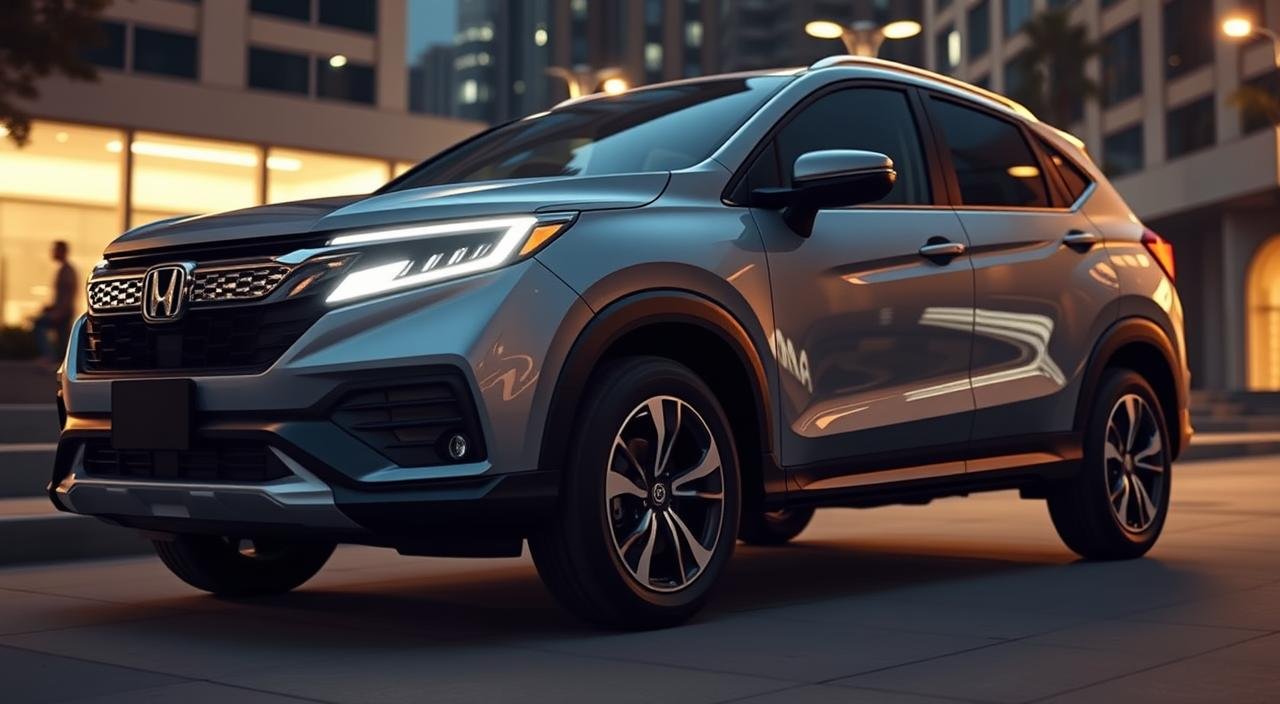
Oct
Can a few strategic updates turn an SUV into a top contender? Honda thinks yes with its updated Elevate, perfect for India’s festival season. The compact SUV market is tough, and Honda wants to boost the Elevate’s standing.
The updated Honda Elevate comes with new looks and better inside features. It keeps its strong 1.5-liter i-VTEC petrol engine. Prices start at Rs 11.91 lakh and go up to Rs 16.81 lakh (ex-showroom).
It has 458 liters of boot space and seats that fold 60:40. The 2650mm wheelbase makes the inside roomy. Plus, GST changes mean prices could drop by up to Rs 58,400 from September 22.
This review looks at if the Elevate’s updates make it worth considering. With new looks, useful features, and good prices, it’s a solid choice for city driving.
Key Takeaways
- Honda Elevate receives design and interior updates for the festival season
- Prices range from Rs 11.91 lakh to Rs 16.81 lakh with GST benefits up to Rs 58,400
- Retains the reliable 1.5-liter i-VTEC petrol engine
- Offers 458 liters of boot space with expandable 60:40 folding seats
- Measures 4312mm in length with a 2650mm wheelbase for spacious interiors
- Cosmetic updates aim to keep the compact SUV competitive in its segment
Overview of the Honda Elevate’s Latest Updates
The updated Honda Elevate comes with new design elements and modern features. These changes make driving more enjoyable. The SUV now has more customization options and premium touches across different variants.
The refreshed model tackles previous issues while keeping its competitive edge. It stands out in the mid-size SUV segment.
Key Changes in Design and Style
The Honda Elevate Bold Looks package introduces the striking Alpha-Bold Plus Grille option. This design makes the SUV’s front look more aggressive and bold. Crystal Black Pearl paint is now available across V, VX, and ZX variants, adding a sophisticated look.

Enhanced Interior Features
The interior of the Honda Elevate has been improved for more comfort. The ZX grade has an elegant Ivory and Black two-tone cabin. It comes with leatherette seats and soft-touch inserts.
Lower V and VX grades have new all-black fabric seats with ivory accents. These replace the previous Shadow Beige upholstery for a sportier look.
New Technology Integrations
Technology upgrades have made the Elevate more convenient and comfortable. The ZX variant offers an optional 360-degree camera system for better visibility during parking. Seven-color ambient lighting lets drivers customize the cabin atmosphere.
These tech additions make the updated Elevate a modern, connected vehicle. It meets today’s expectations.
Bold Exterior Enhancements
The updated Honda Elevate stands out with its strong look and sleek design. It has a commanding presence on the road, making it stand out in the compact SUV market. The design changes highlight the SUV’s better performance while keeping it practical for Indian roads.
Revised Grille and Headlights
The front of the Honda Elevate has been completely revamped. It now has a large, upright grille with thick chrome accents. This bold grille, along with a flat bonnet, gives the SUV a powerful look. The angular headlights blend well with the grille, making the Elevate look modern.
Diamond-cut 17-inch alloy wheels add to the strong front design. Protective cladding also highlights the SUV’s rugged side.
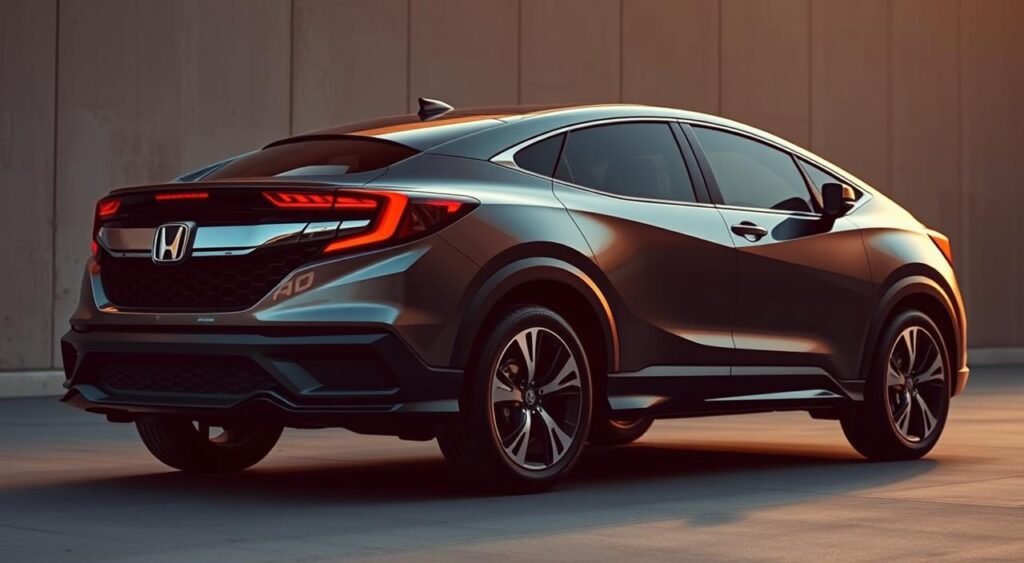
Sporty Body Lines and Colors
Sharp lines run along the side, creating a dynamic look from front to back. The thick C-pillar adds strength to the design. At the back, connected tail lamps with crisp edges make the SUV look wider and more stable.
Color options include:
- Single-tone finishes: Phoenix Orange Pearl, Obsidian Blue Pearl, Radiant Red Metallic, Platinum White Pearl, Golden Brown Metallic, Lunar Silver Metallic, and Meteoroid Gray Metallic
- Dual-tone options: Three combinations with Crystal Black Pearl roofs
- Black Editions: Base Black Edition with dark paint and silver accents, plus Signature Black Edition featuring complete black-out treatment including interior and Alpha-Bold Plus grille
Interior Comfort and Upgrades
The Honda Elevate Updated cabin offers a premium feel with top-notch materials and design. Soft-touch surfaces cover the dashboard, paired with wooden inserts and fine accents. These touches make every drive feel luxurious, whether in the city or on the highway.
Seating and Space Improvements
The seating in the Honda Elevate Features lineup has seen big upgrades. The seats are covered in plush fabric and are very supportive. The front seats, inspired by the Honda City, offer great cushioning and design.
Rear passengers get lots of legroom and headroom from the smart roof design. Big windows let in plenty of natural light. The seats recline for comfort on long trips. This design fits five adults comfortably.
Infotainment System Innovations
The 10.25-inch touchscreen infotainment system is the star of the show. It supports wireless Apple CarPlay and Android Auto, making it cable-free. The 7-inch semi-digital instrument cluster combines analog and digital smoothly.
- Electric sunroof with tilt and slide functions
- Pinch guard safety feature for sunroof operation
- Single-zone automatic climate control with intuitive controls
- 8-speaker sound system for immersive audio
The climate control system has a slim display with easy-to-use toggles and buttons. This design lets drivers adjust settings without taking their eyes off the road.
Performance and Efficiency
The Honda Elevate Performance shines with its well-tuned engine. It’s perfect for daily use and long trips. It’s built for Indian roads, giving you reliable power and great fuel economy.
Engine Options and Power Output
The Honda Elevate Review shows it has one engine for all models. A 1.5-liter four-cylinder engine makes 121 PS (119 bhp) at 6,600 rpm. It also has 145 Nm of torque at 4,300 rpm.
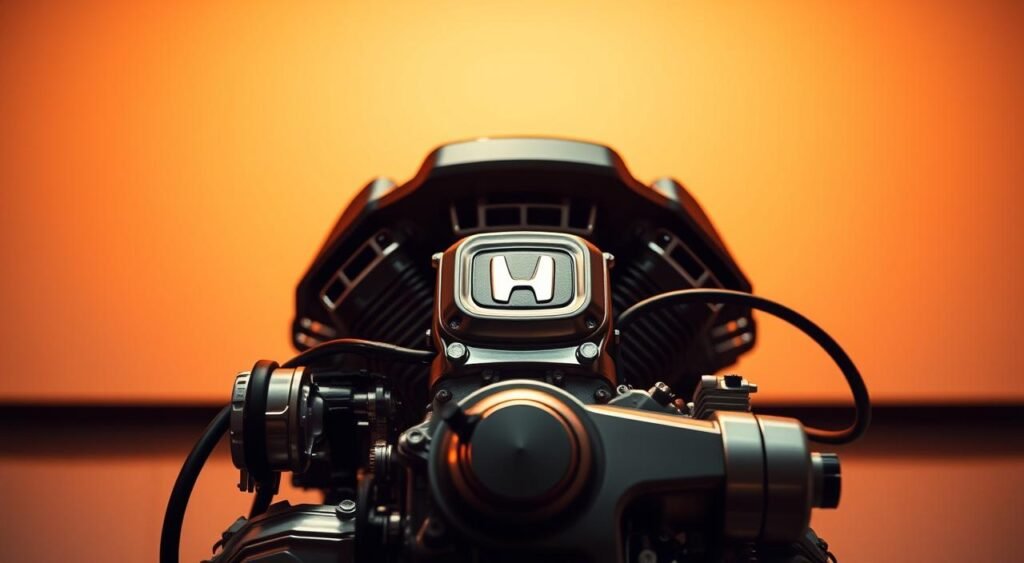
There are two transmission choices: a 6-speed manual or a CVT automatic. The engine provides steady power, making city driving easy. It also performs well when you need to speed up.
Fuel Economy Ratings
Fuel efficiency is a key feature of the Honda Elevate Performance. The ARAI-certified figures are impressive:
| Transmission Type | ARAI Mileage | Real-World Average |
|---|---|---|
| 6-Speed Manual | 15.31 kmpl | 14.0 kmpl |
| CVT Automatic | 16.92 kmpl | 14.94 kmpl |
In the city, you get about 10 kmpl with AC and 12 kmpl without. On highways, it’s 16 kmpl with AC on. The 220mm ground clearance helps it handle rough roads well, without losing fuel efficiency.
Safety Features Introduced
The updated Honda Elevate focuses on keeping passengers safe with top-notch safety tech. It has both active and passive safety systems for a secure ride. The Elevate’s specs include many airbags, advanced driver aids, and a strong build that scored well in crash tests.
Advanced Driver Assistance Systems
The Honda Sensing suite adds the latest in safety tech to the Elevate. It has a Collision Mitigation Braking System (CMBS) that stops the car if it’s about to crash. Adaptive cruise control keeps a safe distance from cars in front on highways.
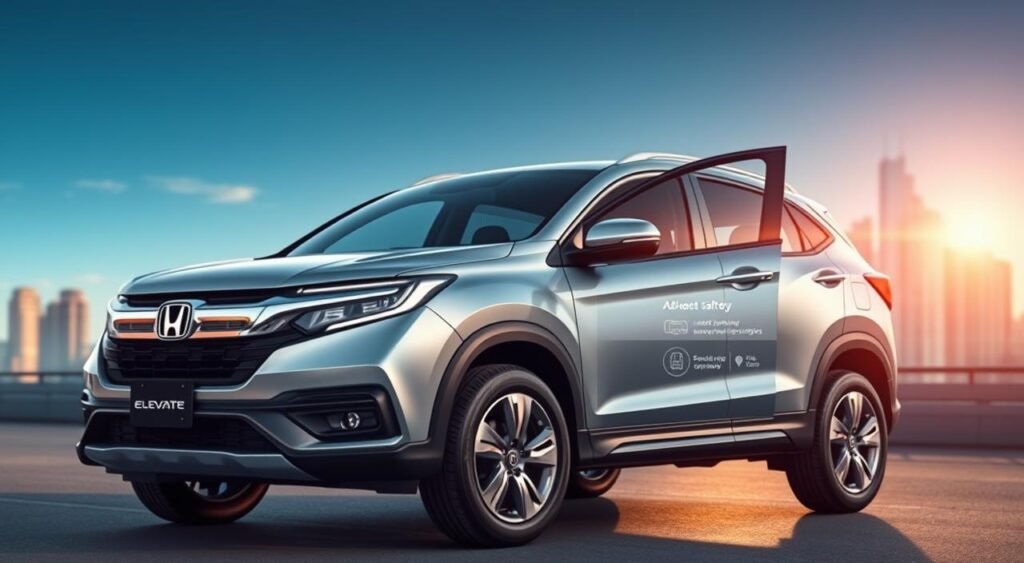
The Lane Keeping Assist System (LKAS) stops you from drifting out of your lane by helping steer. A multi-angle rearview camera gives a 180-degree view with lines for safer backing up. The LaneWatch camera shows blind spots on the screen when you turn right.
Crash Test Ratings and Confidence
JNCAP gave the Honda Elevate a five-star crash test safety rating. This high score means it does well in frontal and side impact tests. It also has six airbags for extra protection in crashes.
| Safety Feature | Function |
|---|---|
| Electronic Stability Control | Prevents skidding and loss of control |
| Hill Start Assist | Prevents rollback on inclines |
| Brake Assist | Maximizes braking force in emergencies |
| Auto-dimming IRVM | Reduces glare from following vehicles |
The Honda Elevate has ABS with EBD for better braking. Parking sensors make it easier to park in small spaces. Even though the safety features are impressive, some, like rear cross-traffic alert, are missing from this model.
Pricing and Value Analysis
The Honda Elevate starts at Rs 11.95 lakh for the base SV MT model. It goes up to Rs 17.07 lakh for the top ZX CVT Dual Tone. Buyers should think if the Elevate fits their budget and needs.
Comparison with Competitors
The Elevate competes in a tough market. Here’s how it compares to main rivals:
| Model | Starting Price | Top Variant Price | Engine Options |
|---|---|---|---|
| Honda Elevate | Rs 11.95 lakh | Rs 17.07 lakh | Petrol only |
| Hyundai Creta | Rs 11.00 lakh | Rs 20.15 lakh | Petrol, Diesel |
| Kia Seltos | Rs 10.90 lakh | Rs 20.35 lakh | Petrol, Diesel |
| Maruti Grand Vitara | Rs 10.99 lakh | Rs 19.93 lakh | Petrol, Hybrid |
The Elevate’s price is in the middle of the pack. It doesn’t offer diesel or hybrid options, which might not appeal to all. But it has good safety and tech features across all models.
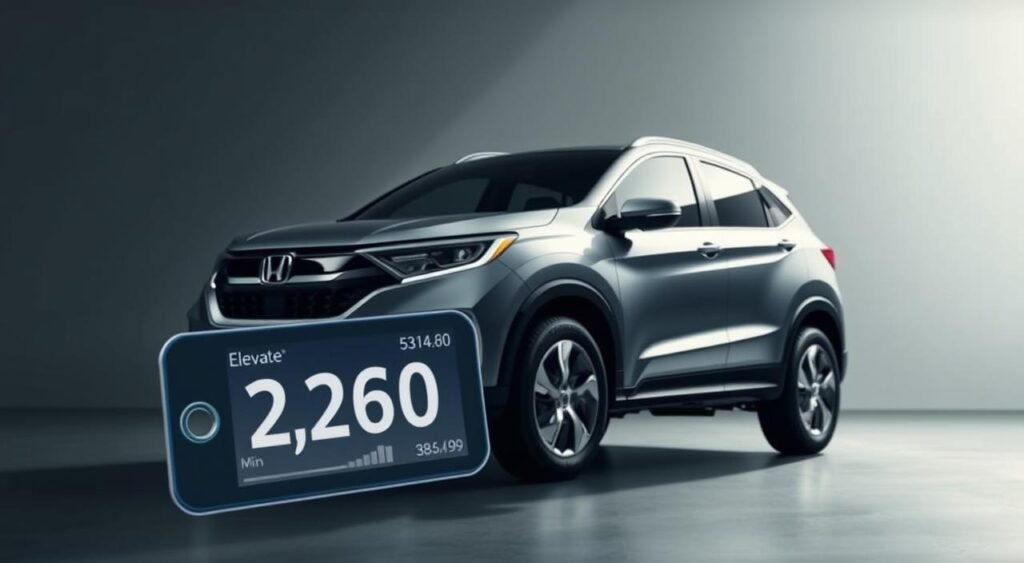
Overall Cost of Ownership
Ownership costs include registration, insurance, and maintenance. The base model costs around Rs 151,806 for registration and Rs 47,648 for insurance. The top model costs Rs 220,687 for registration and Rs 76,698 for insurance.
The Elevate runs on petrol, which is simpler but might cost more to fuel. Honda’s reliability and strong resale value make it a good long-term choice.
Customer Reviews and Market Reception
The updated Honda Elevate has caught the attention of many in India. It has an average rating of 4.6 out of 5 stars from 306 reviews. People love its engine and interior design, making it stand out.
User Experiences and Feedback
Reviews highlight several favorite features. The seats are comfy, and the exterior design handles Indian roads well. Drivers enjoy smooth handling and quick acceleration.
But, there are areas for improvement. Some find the cabin too noisy, and the rear mirrors lack proximity sensors. There are also issues with the ADAS front camera causing sudden braking. Missing features like ventilated seats and a panoramic sunroof are also noted.
Sales Performance
Despite festive offers, the market reception is mixed. Honda’s Great Honda Fest campaign offers big discounts. But, the lack of a diesel engine and competition from Hyundai and Kia are challenges.
Dealers see more traffic during festivals. Yet, Honda needs more engine options to win more customers.
FAQ
What are the key updates in the Honda Elevate?
The Honda Elevate has some big updates. It now has a new Alpha-Bold Plus Grille option. The ZX grade gets a premium Ivory and Black two-tone interior with leatherette seats.
FAQ
What are the key updates in the Honda Elevate?
The Honda Elevate has some big updates. It now has a new Alpha-Bold Plus Grille option. The ZX grade gets a premium Ivory and Black two-tone interior with leatherette seats.
FAQ
What are the key updates in the Honda Elevate?
The Honda Elevate has some big updates. It now has a new Alpha-Bold Plus Grille option. The ZX grade gets a premium Ivory and Black two-tone interior with leatherette seats.
What is the price range for the updated Honda Elevate?
FAQ
What are the key updates in the Honda Elevate?
The Honda Elevate has some big updates. It now has a new Alpha-Bold Plus Grille option. The ZX grade gets a premium Ivory and Black two-tone interior with leatherette seats.
FAQ
What are the key updates in the Honda Elevate?
The Honda Elevate has some big updates. It now has a new Alpha-Bold Plus Grille option. The ZX grade gets a premium Ivory and Black two-tone interior with leatherette seats.
What are the Honda Elevate specs and dimensions?
FAQ
What are the key updates in the Honda Elevate?
The Honda Elevate has some big updates. It now has a new Alpha-Bold Plus Grille option. The ZX grade gets a premium Ivory and Black two-tone interior with leatherette seats.
FAQ
What are the key updates in the Honda Elevate?
The Honda Elevate has some big updates. It now has a new Alpha-Bold Plus Grille option. The ZX grade gets a premium Ivory and Black two-tone interior with leatherette seats.
What engine powers the Honda Elevate and what’s its performance?
FAQ
What are the key updates in the Honda Elevate?
The Honda Elevate has some big updates. It now has a new Alpha-Bold Plus Grille option. The ZX grade gets a premium Ivory and Black two-tone interior with leatherette seats.
FAQ
What are the key updates in the Honda Elevate?
The Honda Elevate has some big updates. It now has a new Alpha-Bold Plus Grille option. The ZX grade gets a premium Ivory and Black two-tone interior with leatherette seats.
What safety features does the Honda Elevate offer?
FAQ
What are the key updates in the Honda Elevate?
The Honda Elevate has some big updates. It now has a new Alpha-Bold Plus Grille option. The ZX grade gets a premium Ivory and Black two-tone interior with leatherette seats.
FAQ
What are the key updates in the Honda Elevate?
The Honda Elevate has some big updates. It now has a new Alpha-Bold Plus Grille option. The ZX grade gets a premium Ivory and Black two-tone interior with leatherette seats.
How does the Honda Elevate compare with competitors?
FAQ
What are the key updates in the Honda Elevate?
The Honda Elevate has some big updates. It now has a new Alpha-Bold Plus Grille option. The ZX grade gets a premium Ivory and Black two-tone interior with leatherette seats.
FAQ
What are the key updates in the Honda Elevate?
The Honda Elevate has some big updates. It now has a new Alpha-Bold Plus Grille option. The ZX grade gets a premium Ivory and Black two-tone interior with leatherette seats.
Is the Honda Elevate worth it based on customer reviews?
FAQ
What are the key updates in the Honda Elevate?
The Honda Elevate has some big updates. It now has a new Alpha-Bold Plus Grille option. The ZX grade gets a premium Ivory and Black two-tone interior with leatherette seats.
FAQ
What are the key updates in the Honda Elevate?
The Honda Elevate has some big updates. It now has a new Alpha-Bold Plus Grille option. The ZX grade gets a premium Ivory and Black two-tone interior with leatherette seats.
What special editions are available for the Honda Elevate?
FAQ
What are the key updates in the Honda Elevate?
The Honda Elevate has some big updates. It now has a new Alpha-Bold Plus Grille option. The ZX grade gets a premium Ivory and Black two-tone interior with leatherette seats.
FAQ
What are the key updates in the Honda Elevate?
The Honda Elevate has some big updates. It now has a new Alpha-Bold Plus Grille option. The ZX grade gets a premium Ivory and Black two-tone interior with leatherette seats.
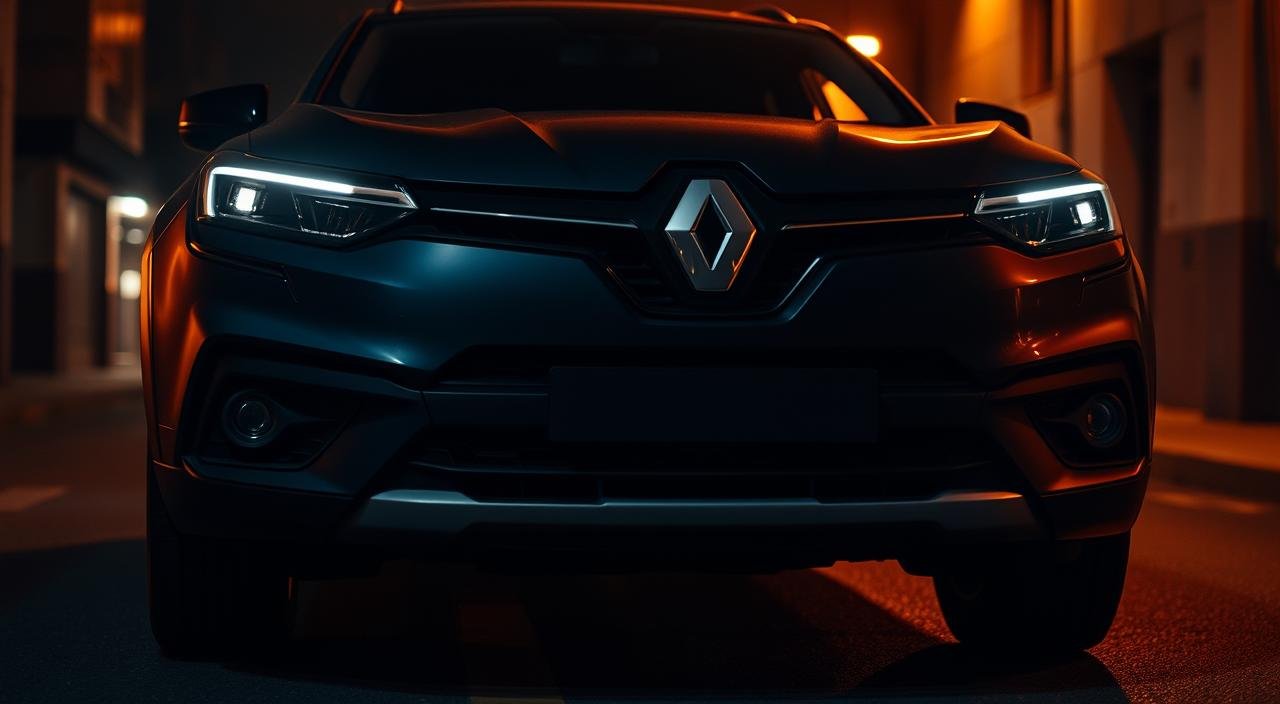
Aug
Imagine if the Renault Triber facelift had all the features customers wanted. The Indian MPV market is tough, balancing cost with quality. The Renault Triber is a budget-friendly 7-seater for families, but it misses some key updates.
The Renault Triber has a design that fits families on a budget. It’s a smart choice for those who need a car that’s easy to use. Even with a facelift, it misses five big chances to stand out more in the market.
Indian buyers look for more than just basic features. The Renault Triber Facelift is up against rivals in a crowded field. Knowing what it misses helps buyers decide if it’s worth waiting for the next update.
Key Takeaways
- The Renault Triber facelift maintains its position as an affordable 7-seater MPV in India
- Five critical areas could have strengthened the vehicle’s competitive advantage
- Market competitors face extended waiting periods, giving Triber an availability advantage
- Customer expectations include advanced features typically found in higher segments
- Future updates might address current shortcomings based on market feedback
- Price positioning remains competitive despite missing enhancement opportunities
Overview of the Renault Triber Facelift
The Renault Triber facelift is a top pick for affordable 7-seater MPVs in India. It keeps its price and useful features. But, some updates could have made it even better.
The new model keeps what made the original great. Yet, it misses chances to meet today’s consumer needs.
Introduction to the facelifted model
The updated Triber has new looks and small changes inside. It’s short at 3,990mm, perfect for tight city spots. It has a new front grille, updated bumpers, and fresh colors.
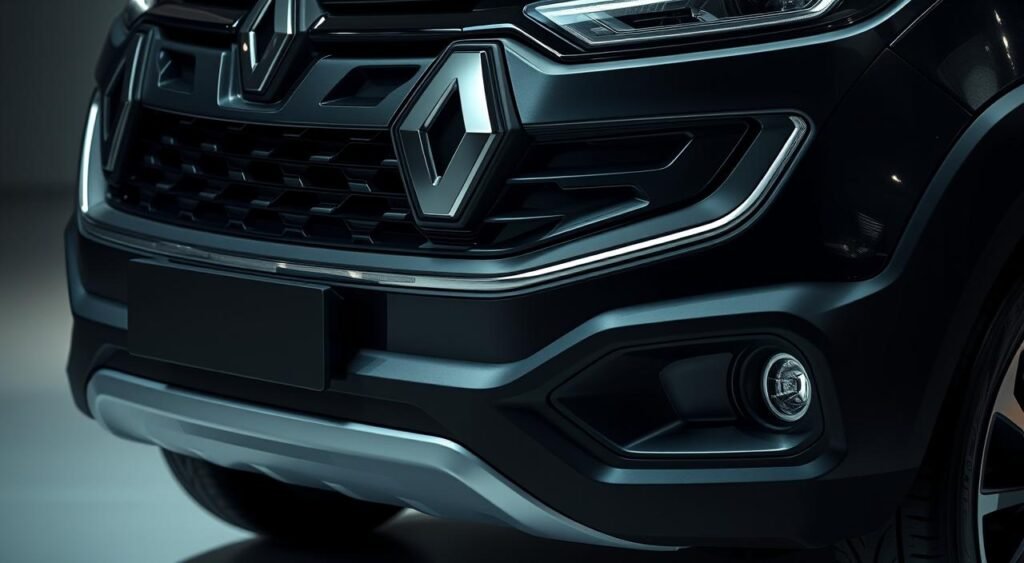
Key features retaining popularity
The Triber’s modular seats are a big hit. The EasyFix seats can be set up in different ways:
- 7-seater family mode
- 5-seater with more room for luggage
- 4-seater for the most space for bags
- Flat-folding for big items
It comes with dual airbags, ABS, rear sensors, and a speed alert. The 8-inch screen supports Android Auto and Apple CarPlay.
Target audience and market position
The Triber is for first-time buyers and families looking for a good deal. It’s priced lower than the Maruti Invicto, making it a smart choice for those who want space and flexibility without spending too much.
Missed Opportunity: Advanced Infotainment System
The updated Renault Triber misses the mark on tech features that today’s drivers want. It keeps its practicality but its infotainment system is a major letdown. This could hurt its standing in the affordable MPV market.
Lack of updated software
The Triber’s infotainment system looks old compared to others. Cars like Maruti have systems that are easy to use and quick. The Triber’s software is slow and lacks the modern feel that city drivers expect.
Switching between music and maps is slow. The graphics and menus are also outdated. Making these changes would have been easy during the update. A new interface could make driving much better.
Absence of wireless connectivity options
One big thing missing from the Triber is wireless phone connection. While other budget cars offer this, the Triber requires a USB cable. This makes the car look cluttered and less convenient.
Today, wireless connection is seen as a must-have, not a luxury. Without it, the Triber falls behind other cars in its price range. This might make people choose other cars that are more connected.
Missed Opportunity: Enhanced Safety Features
Safety is a big worry for people looking at Renault Triber customer reviews. The updated model didn’t add new safety features. This makes it less safe compared to other cars on the market. Families want cars that are safe and meet today’s standards.
Comparison with competitors
The Triber doesn’t match up when it comes to safety features. The Maruti Baleno now has 6 airbags in its top versions. This shows how safety has become more important in budget-friendly cars.
Other cars like the Honda Amaze and Hyundai Grand i10 Nios also have better safety features. They offer electronic stability control and hill hold assist in their best versions.
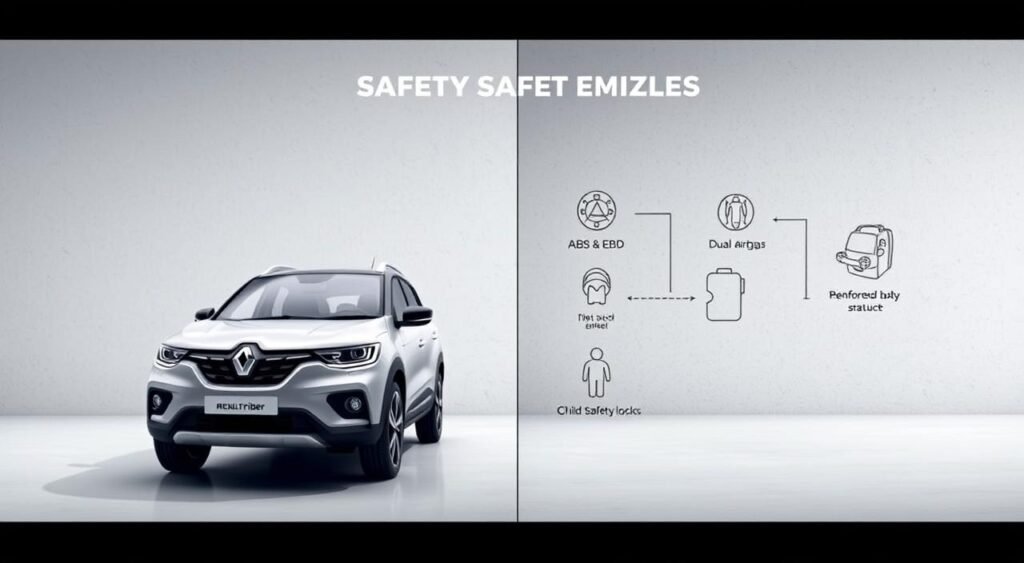
Renault Triber feedback often talks about the lack of safety features. The current model has only dual front airbags, ABS with EBD, and rear parking sensors. This seems old-fashioned compared to what others offer.
- Side and curtain airbags across variants
- Electronic stability programs
- Traction control systems
- ISOFIX child seat anchors as standard
Importance of modern safety standards
India is focusing more on road safety. The Uttar Pradesh government has started a Rs 10 crore AI-based accident prevention program. This shows how serious safety is becoming.
Modern families looking at Renault Triber customer reviews want cars that keep everyone safe. Cars that were once only in luxury models are now in more affordable ones from other brands.
Missed Opportunity: Stylish Exterior Design Touchups
The Renault Triber Facelift has made some small changes but misses the mark. Other cars are getting big updates in looks. The Triber’s design is too safe, missing out on modern styles that buyers want.
Review of the existing design
The Renault Triber updates keep the car’s useful design. The front gets small changes to the grille and bumper. But, it sticks with old halogen headlights, unlike the newer LED lights in other cars.
The sides look the same as before, with the same wheels. Even the top models don’t get fancy alloy wheels.
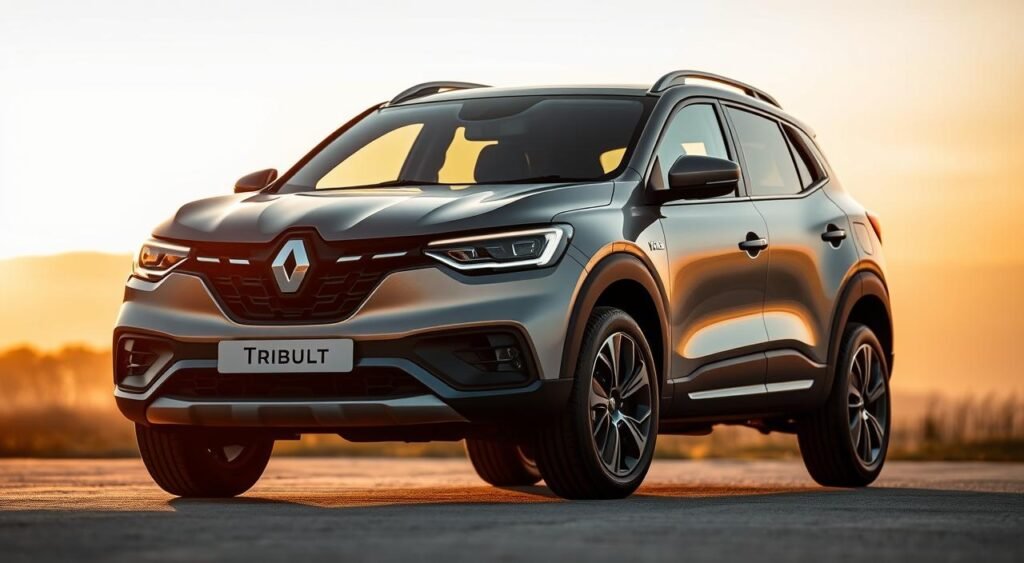
The back of the car also doesn’t change much. It keeps the old tail lamps and bumper. There are only a few chrome bits, which isn’t enough to make it look premium.
Consumers’ expectations for updates
People want cars that stand out more. Other brands offer special kits that change a car’s look. For example, Maruti has kits for the Fronx and Grand Vitara.
- Body cladding and skid plates
- Sporty alloy wheel designs
- Dual-tone paint schemes
- LED lighting signatures
- Bold grille patterns
The Renault Triber Facelift could have added these cool features without breaking the bank. Contemporary design elements are key for attracting young buyers who value looks as much as function.
Missed Opportunity: More Efficient Powertrain Options
The updated Triber keeps its single engine, missing a chance to offer more powertrain choices. Today’s market values alternative fuels, which could draw in cost-conscious buyers. They’re looking for better fuel economy.
Overview of current engine performance
The Triber uses a 1.0-liter naturally aspirated petrol engine. It makes 72 PS and 96 Nm of torque. This engine is okay for city driving but weak when carrying seven passengers.
The fuel efficiency is about 20 kmpl. While it’s good, it’s not the best compared to newer options.
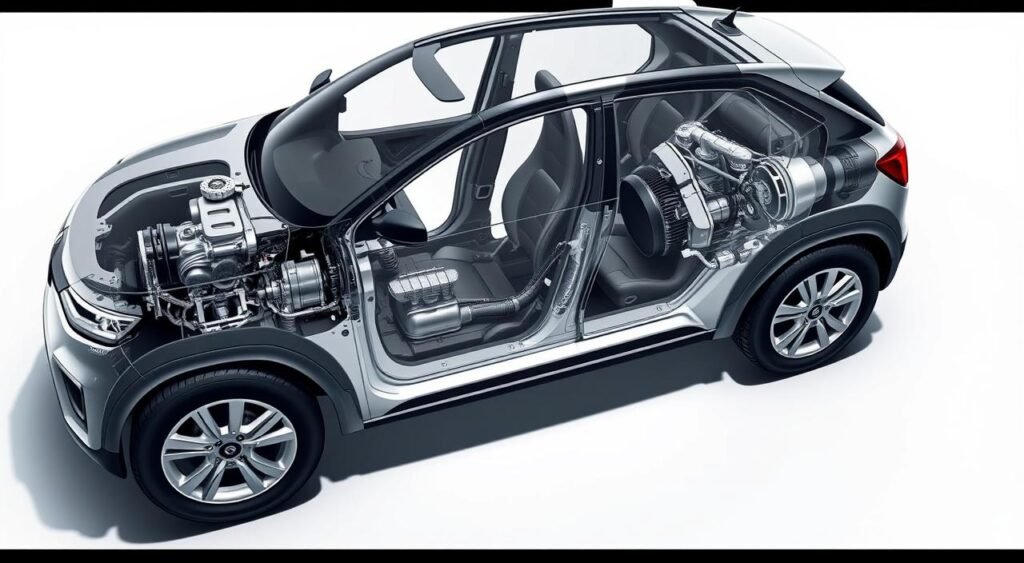
The current Renault Triber features include manual and AMT transmissions. The AMT makes city driving easier but doesn’t boost fuel efficiency or performance much.
Potential for hybrid or electric variants
Competitors like Maruti Suzuki have introduced strong hybrid systems and CNG variants. These options offer substantial fuel savings and lower emissions. The lack of these options limits the Triber’s appeal in an eco-conscious market.
A mild hybrid system could boost fuel efficiency by 15-20%. A CNG option could cut running costs by up to 40%. With fuel prices rising and more people caring about the environment, these options are missed chances. They could expand the Triber’s customer base and strengthen its spot in the affordable seven-seater market.
Missed Opportunity: Interior Comfort and Space Enhancements
The Renault Triber facelift has a functional interior but misses the mark. It keeps its seven-seat layout but lacks the premium feel buyers want. This is a big missed chance to make the Triber more appealing.

Cabin quality and finishes
The Triber’s interior is mostly hard plastic, making it feel more like a work vehicle than a family car. The Maruti XL6, priced between Rs 11.84 lakh and Rs 14.99 lakh, has soft-touch materials on the dashboard and doors. The Triber’s seats are basic, not durable or comfortable enough for daily use.
Sound insulation is another area where the Triber could improve. At highway speeds, road and engine noise make it hard to talk between the third-row passengers and the driver.
Upgrade options that could attract buyers
There are several affordable ways to make the Triber’s interior more appealing:
- Rear AC vents for better passenger comfort
- Premium fabric or leatherette seat options
- Ambient lighting for a modern look
- Better door pad cushioning
- Improved floor mats and cargo organizers
These upgrades would meet real customer needs without raising the price too much.
Missed Opportunity: Pricing Strategy Adjustments
The Renault Triber faces tough competition in India, where price matters a lot. It has cool features like being able to seat 7 people in a small space. But, its price might need to change to compete with others who offer big discounts.
Current pricing in relation to rivals
The Triber is priced like many other cars, giving buyers lots of choices. Maruti Suzuki is leading with huge discounts. The Grand Vitara gets up to Rs 1.54 lakh off, and the Baleno and Fronx have discounts too.
These deals make other cars seem more affordable to Indian buyers who watch their budget closely.
Suggestions for competitive pricing
Customers have given Renault Triber feedback on how to make the price better. Here are some ideas:
| Strategy Type | Proposed Benefit | Target Customer |
|---|---|---|
| Exchange Bonus | Rs 25,000-40,000 | Upgrade buyers |
| Corporate Discount | Rs 15,000-20,000 | Salaried professionals |
| Rural Market Incentive | Rs 10,000-15,000 | Tier 2-3 city buyers |
| Festival Offers | Rs 30,000-50,000 | Seasonal buyers |
Changing the price could attract more customers. Exchange bonuses could draw in those upgrading from old cars. Corporate discounts might appeal to professionals who need a family car.
Customer Feedback on Misses
Real-world experiences from owners show the Renault Triber Facelift’s shortcomings. They share specific concerns that future buyers should think about before buying.
Insights from existing owners
Renault Triber customer reviews highlight common issues. Build quality is a big worry, with rattling sounds from dashboard panels after 10,000 kilometers. Service access is hard in smaller cities, where Renault dealerships are few.
Families who picked the Triber for its 7-seat layout are disappointed. They like the practicality but feel it lacks features that rivals offer at the same price.
Potential areas for improvement based on reviews
Reviews point out key areas for improvement:
| Improvement Area | Owner Complaints | Competitor Advantage |
|---|---|---|
| Premium Features | No sunroof or LED headlights in top variant | Maruti Ertiga offers both at similar pricing |
| Engine Refinement | Noisy at highway speeds | Honda BR-V provides quieter cabin experience |
| Interior Quality | Hard plastics throughout | Kia Carens uses soft-touch materials |
| Dealer Network | Limited service centers | Maruti has 3x more touchpoints nationally |
The Renault Triber Facelift’s good price doesn’t make up for daily issues. Budget-conscious families often choose well-known rivals, showing value goes beyond the initial cost.
Conclusion: The Future of Renault Triber
The Renault Triber facelift has promise but needs more work. It’s a good choice for Indian families looking for a budget-friendly seven-seater. But Renault missed the chance to make it stand out more.
Summary of missed opportunities
There are five key areas where Renault could have done better. The infotainment system doesn’t have wireless connectivity, which is now expected. Safety features are also lacking, with rivals having six airbags as standard.
The exterior design could be bolder to grab more attention. The engine options are limited to petrol, with no CNG or mild-hybrid choices. The interior could use more premium materials to match the price with competitors like Maruti Suzuki and Hyundai.
Recommendations for future models and updates
Future updates should focus on what customers want most. Adding wireless Android Auto and Apple CarPlay would improve the cabin. Matching safety standards with six airbags and electronic stability control is key.
Bolder grilles and LED lights could make the exterior more appealing. CNG variants would help with fuel costs in India. Premium seats and soft-touch dashboards would enhance quality. Smart pricing with exchange bonuses could make the Triber more competitive.
FAQ
What are the main areas where the Renault Triber facelift falls short compared to competitors?
The Renault Triber facelift misses in five key areas. It lacks wireless Android Auto and Apple CarPlay in its infotainment system. It also has fewer safety features than rivals, with only 6 airbags in some models.
Its exterior design updates are conservative. It doesn’t offer alternative fuel options like CNG or hybrid variants. The interior materials and comfort features are also basic.
How does the Renault Triber’s safety package compare to other MPVs in its segment?
The Renault Triber’s safety features are basic. Competitors like the Maruti Baleno offer 6 airbags as standard in higher trims. It lacks modern safety technologies like electronic stability control and hill hold assist.
These are important for safety-conscious families in India. The Triber also doesn’t have advanced driver assistance systems (ADAS).
What infotainment updates should the Renault Triber have included?
The Renault Triber should have wireless Android Auto and Apple CarPlay connectivity. These are now standard in competing models. The software interface needs to be improved to match rivals.
This is important for tech-savvy urban buyers who value seamless smartphone integration.
Are there any powertrain alternatives missing in the Renault Triber facelift?
Yes, the Renault Triber lacks alternative fuel options. Competitors offer hybrid and CNG variants. The Triber doesn’t have these options, which limits its appeal to buyers looking for better fuel efficiency.
What exterior design changes could have improved the Renault Triber’s appeal?
The Renault Triber could have had modern design elements. This includes LED lighting signatures, bold grille designs, and distinctive alloy wheel patterns. Competitors show how visual differentiation can make a car look more premium.
How does the Renault Triber’s pricing strategy need adjustment?
The Renault Triber needs more aggressive promotional strategies. Maruti offers big discounts on the Grand Vitara and Baleno. The Triber could benefit from similar incentives to attract more customers.
What interior improvements are customers expecting in the Renault Triber?
Customers want premium touches like those in the Maruti XL6. This includes better plastics, upgraded seat materials, and rear AC vents. They also want ambient lighting and improved sound insulation.
These upgrades would make long trips more comfortable without increasing costs too much.
What do Renault Triber customer reviews highlight as main concerns?
Customer feedback mentions build quality concerns and limited dealer network. The lack of premium features in higher variants is also a concern. These issues stop the Triber from meeting demand for well-equipped family vehicles.

Aug
Is it worth paying more for safety features? The Maruti XL6 now comes with 6 airbags as standard. This upgrade costs up to Rs 41,000 more, making some wonder if it’s worth it.
The Indian car market is changing fast. Now, car makers focus more on safety. Maruti Suzuki has made the XL6 safer by adding six airbags to all models. This move is similar to the update on the Fronx model, showing Maruti’s dedication to keeping passengers safe.
More people in India want cars that are safer. The price increase for these safety features makes some question if it’s fair. But, car makers must follow new rules to make cars safer. The Maruti XL6 now meets these standards with its advanced airbag system.
Key Takeaways
- The Maruti XL6 now includes 6 airbags as standard equipment across all variants
- Prices have increased by up to Rs 41,000 following the safety enhancement
- This update follows similar safety improvements made to the Fronx model
- The Indian automotive market is experiencing increased focus on standard safety features
- Consumer demands and regulatory requirements are driving these safety upgrades
- The price hiked reflects the cost of implementing a full safety system
Introduction to the Maruti XL6’s New Features
The Maruti XL6 has seen a big upgrade, focusing on keeping passengers safe. This update adds key safety features to all models. It shows a big change in how car safety is viewed in India.
The popular MPV now offers better safety without losing its value and practicality.
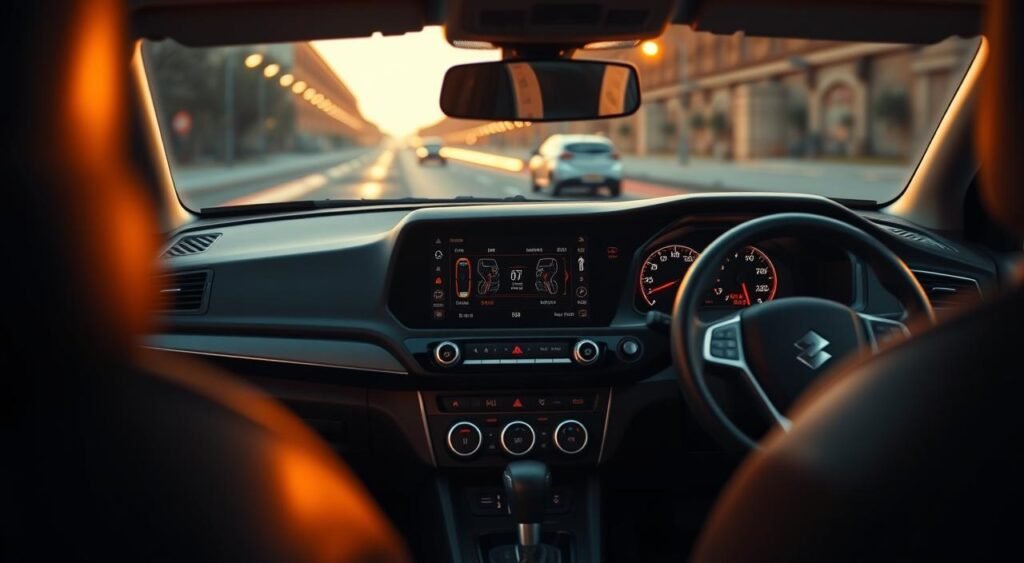
Overview of the Latest Updates
The biggest change is the airbag setup. Now, all XL6 models come with six airbags as standard. This includes front, side, and curtain airbags for all three rows.
It also has Electronic Stability Program (ESP) and hill hold assist for all.
Significance of Standard Airbags
Having six airbags as standard is a big leap for the Maruti XL6. Before, only higher models had more airbags. Now, every XL6 buyer gets the same safety, no matter the trim.
This move meets global safety standards and answers growing concerns about safety in India.
Impact on Consumer Safety
These new safety features greatly benefit families who use the XL6. Airbags now cover all seats, reducing injury risks in crashes. Parents can feel safer with kids in the third row, thanks to curtain airbags.
This focus on safety makes the Maruti XL6 a strong choice in the MPV market.
Pricing Changes and Their Implications
The Maruti XL6 has seen a big price change. This is because it now comes with six airbags as standard in all models. This shows the brand’s dedication to safety, but it also makes the car more expensive.
Breakdown of Price Hike
The price increase is up to Rs 41,000 for different XL6 models. This change is because of the added safety features. Now, the XL6 is priced well in the MPV market, where safety matters a lot.
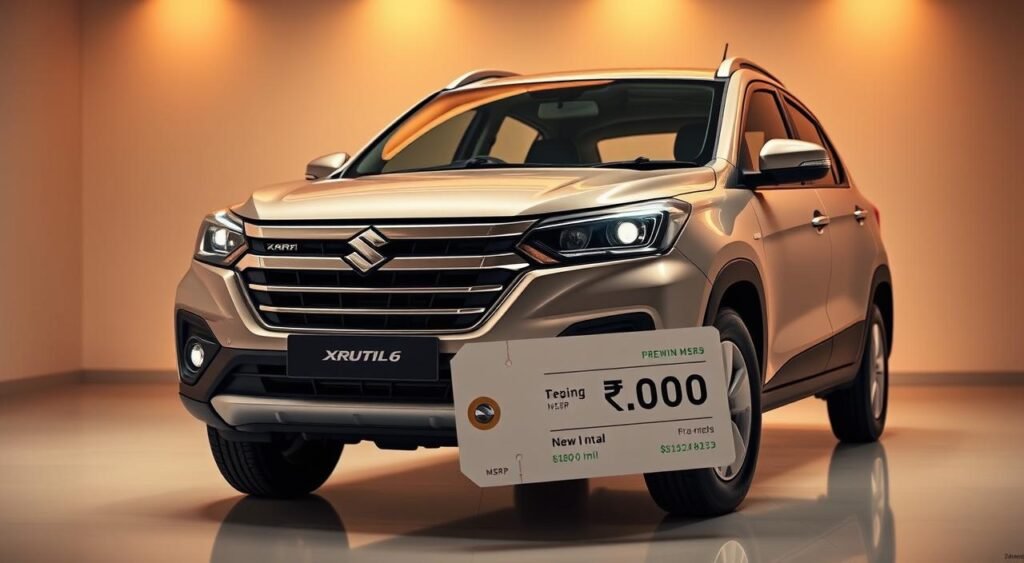
Comparison with Previous Models
The new XL6 is pricier than before. Prices in the MPV market vary, from Rs 5.78 lakh to Rs 7.50 lakh. Despite the higher cost, the XL6 is seen as a good deal because of its safety features.
Market Reaction
People are generally happy with the new XL6’s price. Dealers say they’re getting a lot of interest. The brand’s success, hitting 30 lakh sales by May 2023, shows it’s trusted by many.
Customers are okay with paying more for safety. They see it as a smart choice, not just an extra cost.
Enhanced Safety Features of the Maruti XL6
Maruti Suzuki has made a big leap in making passenger safety a top priority. They’ve made 6 airbags standard in all XL6 models. This shows their dedication to safety without making customers pay more for it.
Details of the 6 Airbags System
The XL6’s airbag system offers protection in all directions. It has dual front airbags for the driver and passenger, side airbags for the front seats, and curtain airbags for the windows. This setup protects against frontal, side, and rollover impacts.
Other Safety Measures Included
The XL6 also has other vital safety features. These work together to prevent accidents and reduce injuries. The vehicle includes:
- ABS (Anti-lock Braking System) with EBD for controlled braking
- Electronic Stability Program for better vehicle control
- Hill Hold Assist to prevent rollback on slopes
- ISOFIX child seat anchors as standard
- Reverse parking sensors with camera
Importance of Comprehensive Safety Features
Maruti’s decision to include these safety features as standard shows they understand Indian roads and customer needs. With more people focusing on safety, these features are now seen as must-haves. The XL6’s safety package makes it a strong contender in the MPV market, where family safety is key.
Competitor Analysis in the MPV Segment
The premium MPV market in India is getting more competitive. Safety features are key for buyers. The Maruti XL6 competes with established players, each with their own value.
Key Rivals of the XL6
The Maruti XL6 faces tough competition in the Indian market. Its main rivals are:
- Kia Carens – A feature-rich MPV with modern styling
- Mahindra Marazzo – Known for spacious interiors and robust build
- Toyota Innova Crysta – Premium positioning with proven reliability
- Renault Triber – Budget-friendly option with flexible seating
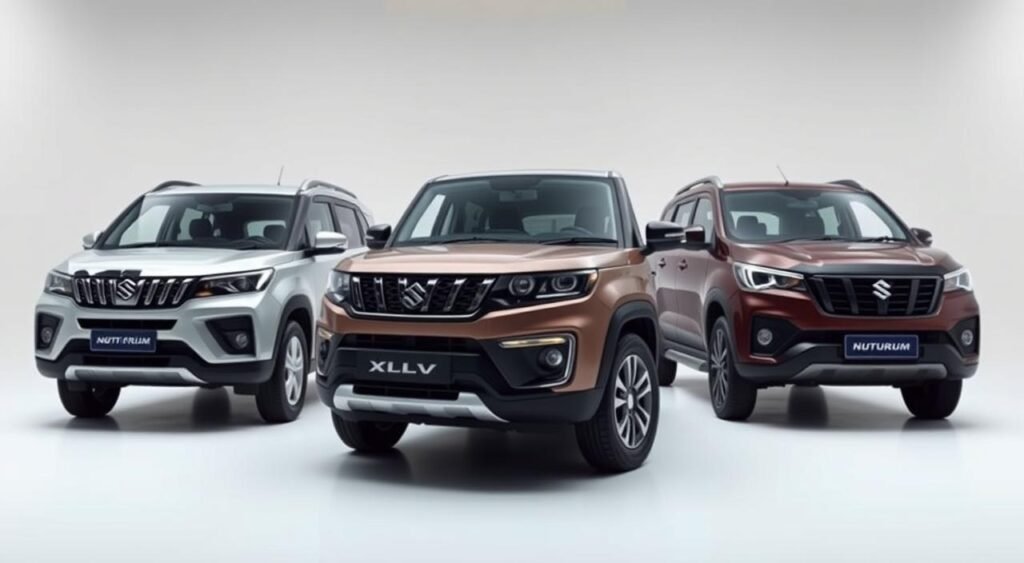
How Does XL6 Compare With Rivals?
The latest update makes the Maruti XL6 a strong contender in safety. It now comes with six airbags, matching Kia Carens. The XL6 also has Maruti’s wide service network and good fuel efficiency.
Its refined petrol engine offers smooth driving on both city and highway roads.
Market Positioning
The Maruti XL6 finds a balance between budget and premium MPVs. It’s priced to appeal to families looking for safety, comfort, and reliability. The latest update shows Maruti’s dedication to safety while keeping prices reasonable.
This approach has helped Maruti keep its sales strong in the competitive MPV market.
Customer Reactions and Feedback
The Maruti XL6 now comes with six airbags as standard. This has started a big talk among car buyers in India. People are talking about the price going up and the safety features getting better.
Early Responses from Drivers
Maruti XL6 owners are happy with the new safety features. They like how the brand is focusing on keeping passengers safe. Online and social media are full of good comments about the airbag upgrade.
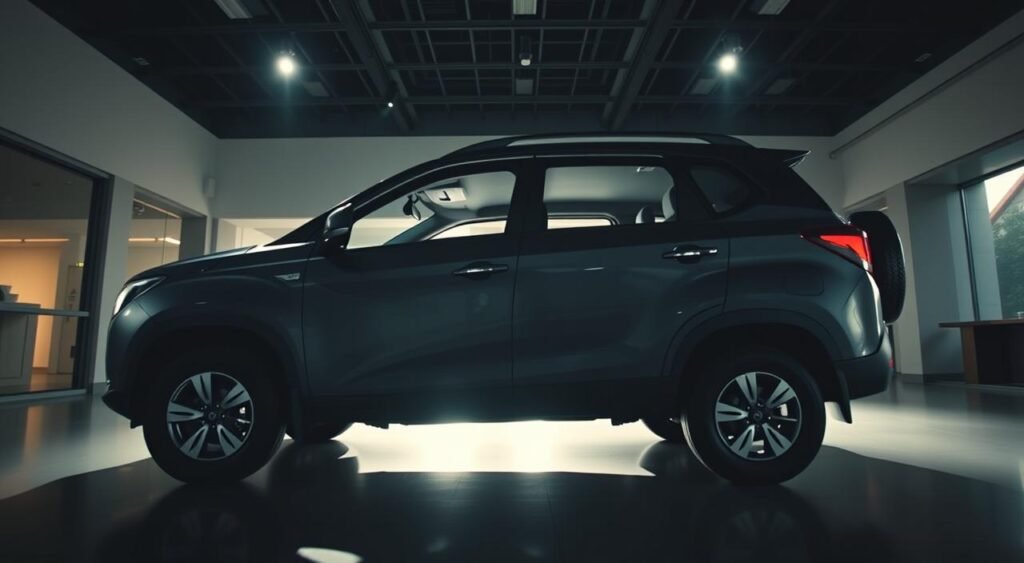
Safety Concerns Addressed
Some buyers were worried about airbag coverage before. The new safety features fix this problem. Families are really happy with the six airbags in the Maruti XL6.
Overall Sentiment toward Price Hike
People’s reactions to the price change are interesting:
| Customer Segment | Response to Price Increase | Purchase Intent |
|---|---|---|
| First-time Buyers | Slightly Concerned | 70% Positive |
| Upgrade Buyers | Accepting | 85% Positive |
| Safety-Conscious Families | Very Supportive | 92% Positive |
Indian buyers are starting to see safety as more important than a little extra cost. This change shows they care a lot about keeping everyone safe in cars.
Future Prospects for the Maruti XL6
The Maruti XL6 is at a key point in India’s car market. It’s ready to meet new safety standards and what people want. This makes it a great choice for families looking for safety and value.
Potential Market Trends
The car market in India is moving towards safer, more affordable vehicles. The Maruti XL6 is a perfect fit with its 6-airbag setup. Experts say more people will want safe cars, even in the mid-range.
This trend helps the XL6. Families want cars that are safe and practical.
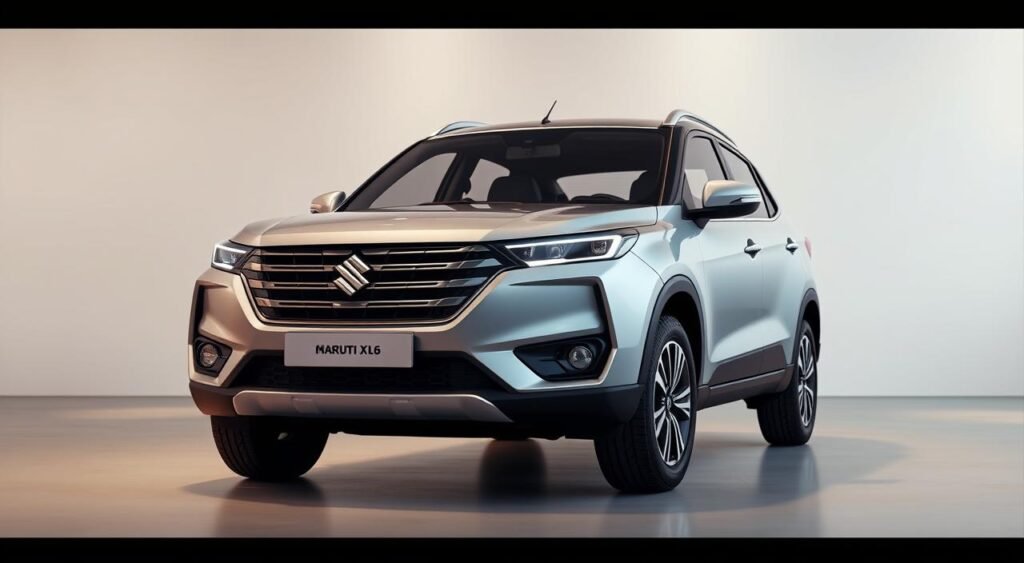
Expected Updates and Releases
Suzuki Motor Corporation is dedicated to improving its cars for local markets. The Maruti XL6 might see updates like:
- Improved fuel efficiency
- More advanced driver aids
- Better infotainment systems
- Hybrid or CNG options
These changes will keep the XL6 competitive. It will remain a top choice for families in India.
Long-Term Consumer Trust in Maruti
Maruti has been a trusted brand in India for years. Making 6 airbags standard on the XL6 shows they care about safety. Consumer confidence remains high because Maruti offers good value and features.
This trust leads to strong resale values. It also keeps the Maruti XL6 at the top of the market.
Conclusion: Is the Price Hike Worth It?
The Maruti XL6 now comes with 6 airbags standard, a big change in safety for MPVs. This upgrade costs Rs 41,000 more, a price increase buyers need to think about. It’s a trade-off between more safety and spending more money on a popular seven-seater car.
Balancing Safety and Affordability
The price hike for 6 airbags changes how buyers see the XL6. While Rs 41,000 is a lot, it covers all passengers in three rows. This makes the XL6 as safe as pricier cars in crashes. For families who value safety, the extra cost is worth it.
Final Thoughts on the XL6’s Upgrades
Maruti’s move to standard 6 airbags shows a shift in safety needs in India. The company’s success, like hitting 1 million Wagon R sales by 1998, shows it’s reliable. The XL6’s upgrade means it’s a smart choice for families who want safety.
Recommendations for Prospective Buyers
Those looking at the Maruti XL6 should see the price hike as an investment in safety. The 6 airbags give peace of mind, even if it costs more. If budget is tight, look into financing. Test driving and comparing with others will help decide. The XL6 is a solid choice for families wanting safety without going premium.
FAQ
What is the price increase for the Maruti XL6 after adding 6 airbags as standard?
The Maruti XL6 prices have gone up by up to Rs 41,000. This is because six airbags are now a standard feature in all models. The cost of these advanced safety features is reflected in the price increase.
Which variants of the Maruti XL6 now come with 6 airbags?
All variants of the Maruti XL6 now have six airbags as standard. No matter which trim you choose, you get the same level of airbag protection for everyone.
What safety features does the 6-airbag system include?
The six-airbag system protects the driver and front passenger. It also includes side impact airbags. The XL6 also has ABS, EBD, and seat belt warnings for extra safety.
How does the Maruti XL6’s safety update compare to other Maruti models?
The XL6 is similar to the Maruti Suzuki Fronx, which also got six standard airbags. This shows Maruti’s focus on making all their cars safer for everyone.
Is the Rs 41,000 price increase justified for the safety features?
The price hike is worth it for the extra safety it brings. With more people wanting safe cars, this update is a big step forward in protecting passengers.
How does the XL6 compete in the premium MPV segment after this update?
With six airbags as standard, the XL6 is now a stronger contender in the premium MPV market. It meets the growing demand for safety and keeps up with the competition.
What other Maruti models have achieved significant sales milestones?
The Maruti Wagon R has been a huge success, selling over 1.90 lakh units in 2024. It has reached 30 lakh sales in India and 10 million globally, showing Maruti’s strong market position.
Will there be future updates to the Maruti XL6?
Suzuki Motor Corporation plans to keep improving the XL6 to meet local needs and safety standards. The car industry is moving towards more standard safety features, so we can expect more updates.
